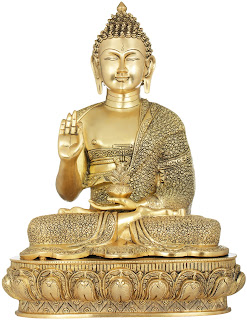Art has such a diverse meaning that it is
difficult to define it in just a combination of words. But even so, some have
defined art as “the conscious use of skill and creative imagination especially
in the production of aesthetic objects” while others like to call it a medium
of expression in simple terms. Artist or not, we all as human beings know that
art is much more than just that! Art is anything that we put our full efforts
in. it could be anything, even our bodies. Painting, sculpting, dancing,
singing, writing etc are the obvious forms of art but in today’s world, art has
a much extended definition. With the advent of the internet and social media,
art has found new meanings. Art has branched out into everything we do and
that’s why art is important in our lives now more than ever.
Today makeup is considered as an art as is
photography and blogging. There is so much more that we haven’t seen yet but
will definitely fall under the huge umbrella of the term ‘art’ in the future.
Even so, like it is always said that there is no better way to know the future
than revisiting the history. It is important to take inspiration from our
roots. And there is no better way to inspire than to appreciate some art. Indian art makes one of the oldest art forms among others like Chinese and
European art. Because India has so much history, it undoubtedly reflects in its
art, especially since art is supposed to tell stories of different eras and
experiences.
Art is also said to improve our thinking
abilities and relieve a great amount of stress. This is also the reason why
this new fad of adult coloring books has come into picture. There are now
coloring books available in the market that have rather complicated outlines of
patterns that then need to be carefully filled with colors by adults. Art is
also used to unite people from all over the world no matter what culture or
class they belong to because art is impartial. For centuries art has played a
key role in eliminating cultural differences and conflicts. It is a kind of
safe recluse for all those who want to escape the harshness of reality. You
could enter a different world just by carefully gazing at a painting and losing
yourself in it.
A good piece of art would force you to think, ask
questions, take you on a journey, widen your mental horizons and reflect
individuality. Good art would talk straight to your heart. Art is supposed to
bring about change in the society because that’s how big the role of art really
is in every individual’s life! This is why many people encourage little
children to pursue a hobby and find their calling. Colors literally have the
magical ability to instantly lift up or bring down your mood. Bright colors
make you happy while dark colors tend to make you depressed. Hence color therapy is used to treat so many
individuals suffering from depression.
Art is also the perfect medium for any individual
to express himself or to depict the conditions of the society as well as
mirroring the culture that an individual belongs to or is inspired by. For
example you will easily differentiate Japanese art from Indian art due to its obvious elements like the use of colors,
lines, curves, landscapes etc. To conclude art has many meanings and
definitions that differs from person to person and their differing
perspectives, however it is something that has continued to amaze the human
race and will always do so.






